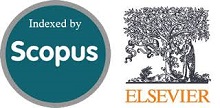Influence of Bacillus Subtilis Bacteria on Strength and Durability of Concrete with Silica Fume
Abstract
Â
Doi: 10.28991/CEJ-2025-011-05-013
Full Text: PDF
Keywords
References
Chahal, N., Siddique, R., & Rajor, A. (2012). Influence of bacteria on the compressive strength, water absorption and rapid chloride permeability of fly ash concrete. Construction and Building Materials, 28(1), 351–356. doi:10.1016/j.conbuildmat.2011.07.042.
Ghosh, P., Mandal, S., Chattopadhyay, B. D., & Pal, S. (2005). Use of microorganism to improve the strength of cement mortar. Cement and Concrete Research, 35(10), 1980–1983. doi:10.1016/j.cemconres.2005.03.005.
Ramachandran, S. K., Ramakrishnan, V., & Bang, S. S. (2001). Remediation of concrete using micro-organisms. ACI Materials Journal, 98(1), 3–9. doi:10.14359/10154.
Van Tittelboom, K., De Belie, N., De Muynck, W., & Verstraete, W. (2010). Use of bacteria to repair cracks in concrete. Cement and Concrete Research, 40(1), 157–166. doi:10.1016/j.cemconres.2009.08.025.
Jonkers, H. M., Thijssen, A., Muyzer, G., Copuroglu, O., & Schlangen, E. (2010). Application of bacteria as self-healing agent for the development of sustainable concrete. Ecological Engineering, 36(2), 230–235. doi:10.1016/j.ecoleng.2008.12.036.
Zheng, W., Li, Y., Wei, H., Gao, G., Zhang, D., & Jiang, Z. (2020). Rapidly self-healing, magnetically controllable, stretchable, smart, moldable nanoparticle composite gel. New Journal of Chemistry, 44(25), 10586–10591. doi:10.1039/c9nj05885k.
Shah, K. W., Huseien, G. F., & Xiong, T. (2020). Functional nanomaterials and their applications toward smart and green buildings. New Materials in Civil Engineering, 395–433. doi:10.1016/b978-0-12-818961-0.00011-9.
Kumar, P. K., & Chinnaraju, K. (2022). Utilization potentials of a nano bio-carbonate filler to mitigate alkali-aggregate reactivity of glass powder–foamed concrete. Canadian Journal of Civil Engineering, 49(10), 1569–1581. doi:10.1139/cjce-2022-0122.
Wang, H., Zhang, A., Shi, F., Liu, J., Cao, P., Du, T., & Gu, H. (2020). Development of relationships between permeability coefficient and electrical and thermal conductivity of recycled aggregates permeable cement concrete. Construction and Building Materials, 254, 119247. doi:10.1016/j.conbuildmat.2020.119247.
Gökçe, H. S., Hatungimana, D., & Ramyar, K. (2019). Effect of fly ash and silica fume on hardened properties of foam concrete. Construction and Building Materials, 194, 1–11. doi:10.1016/j.conbuildmat.2018.11.036.
Anastasiou, E., Lorentz, K. O., Stein, G. J., & Mitchell, P. D. (2014). Prehistoric schistosomiasis parasite found in the Middle East. The Lancet Infectious Diseases, 14(7), 553–554. doi:10.1016/S1473-3099(14)70794-7.
Madhan Kumar, M., Vijaya Ganapathy, D., Subathra Devi, V., & Iswarya, N. (2019). Experimental Investigation on Fibre Reinforced Bacterial Concrete. Materials Today: Proceedings, 22, 2779–2790. doi:10.1016/j.matpr.2020.03.409.
Nugroho, S. A., Wardani, S. R., Muntohar, A. S., & Satibi, S. (2024). Effect of Coal Combustion Waste on Cement-Treated Clay. Civil Engineering Journal, 10(11), 3603-3612. doi:10.28991/CEJ-2024-010-11-010.
Gupta, S., Kua, H. W., & Pang, S. D. (2020). Effect of biochar on mechanical and permeability properties of concrete exposed to elevated temperature. Construction and Building Materials, 234, 117338. doi:10.1016/j.conbuildmat.2019.117338.
Prasad, C. V. S. R., & Lakshmi, T. V. S. V. (2020). Experimental investigation on bacterial concrete strength with Bacillus subtilis and crushed stone dust aggregate based on ultrasonic pulse velocity. Materials Today: Proceedings, 27, 1111–1117. doi:10.1016/j.matpr.2020.01.478.
DOI: 10.28991/CEJ-2025-011-05-013
Refbacks
- There are currently no refbacks.
Copyright (c) 2025 Deya Qtiashat, Mahmoud Al Khazaleh, Krishna Kumar P, Islam A. ALSHAFEI

This work is licensed under a Creative Commons Attribution 4.0 International License.






